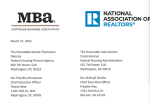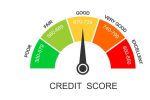By Dennis Norman, on February 22nd, 2025 
The latest interest rates as of February 21, 2025, bring good news for homebuyers in St. Louis. The 30-year fixed rate has dipped to 6.89 making it more affordable for potential buyers to secure a mortgage. The 15-year fixed rate is now 6.37%, offering even more savings. Jumbo loans have seen a significant drop, with the 30-year jumbo rate7.7.227.22 by 0.08%. Adjustable-rate mortgages like the 5/1 and 5/6 SOFR ARM are relatively s5.52 with minor decreases. FHA and VA loans have also seen reductions, making them attractive options for For the St. Louis real estate market, these changes present opportunities Continue Reading →
By Dennis Norman, on September 11th, 2024 
The interest rate on a 30-year fixed-rate conventional mortgage fell to 6.22% yesterday, according to the MND rate index as shown in the chart below. This marks the lowest rate in nearly a year and a half! The last time rates were this low was back on April 6, 2023 when they dropped to 6.18% for the day. This drop in rates comes in advance of the anticipated rate reduction when the Federal Open Market Committee (FOMC) meetings next week.
See Current (and historical) Mortgage Rates Get a REAL Pre-Approval Now
Mortgage Interest Rates – 30-Year Fixed Rate Continue Reading →
By Dennis Norman, on July 30th, 2024 
UPDATE: Friday, August 2, 2024…Today, after the jobs report and other economic data was released, mortgage interest rates fell to 6.40% on a 30-year fixed rate mortgage, the lowest level in nearly 16 months…the last time rates were this low was in early April 2023.
The interest rate on a 30-year fixed-rate conventional mortgage fell to 6.80% today, according to the MND rate index as shown in the chart below. This marks the lowest rate in over six months, since January 9th of this year when rates were at 6.80% as well. This drop in rates comes as the Federal Continue Reading →
By Dennis Norman, on July 16th, 2024 
Mortgage interest rates for a 30-year fixed-rate mortgage dipped to 6.81% this week, the lowest level since February 1 when the rate fell to 6.63%. The rate for a 30-year fixed-rate FHA loan fell to 6.26%. This has a significant impact on the cost of a home. For example, a change of just 0.5% in the interest rate can alter the house payment on a typical median-priced home in St. Louis by nearly $100.
Search St Louis Homes For Sale Search St Louis Upcoming OPEN HOUSES
Mortgage Interest Rates
(click image below for live, interactive chart)
Continue Reading →
By Dennis Norman, on May 3rd, 2024 
Interest rates for a 30-year fixed-rate conventional mortgage declined to 7.28% today, down from their five-month high of 7.52%, reached just over a week ago. Today’s rate marks the lowest since April 9, when the interest rate on a 30-year fixed-rate mortgage stood at 7.06%.
Although the accompanying chart traces the trajectory of interest rates over the past 40 years, extending back to 1980, it does not predict their future movements. The direction of mortgage rates is influenced by a myriad of factors including, but not limited to, Federal Reserve policies, inflation expectations, and global economic conditions. Currently, experts Continue Reading →
By Dennis Norman, on April 26th, 2024 
Interest rates for a 30-year fixed rate conventional mortgage hit 7.52% yesterday, the highest rate in five months, since November 13, 2023 when they were 7.58%. Today, however, they eased and the 30 year fixed rate mortgage interest rate dropped slightly to 7.45% and the interest rate for a 30-year FHA loan slipped below 7% to 6.95%.
The chart below shows interest rates for over 40 years, back to 1980 and shows about as much change as we’ve seen in fashion and technology during the period — from an astronomical high of 18.29% in October 1981 to an unbelievable low Continue Reading →
By Dennis Norman, on April 11th, 2024 
Last week, the interest rates for 30-year fixed-rate mortgages climbed past the 7 percent mark. Despite this increase, as the chart below illustrates, there was a significant 10 percent increase in refinancing applications. This is in sharp contrast to a 5 percent decline in purchase applications. The growth in the refinancing segment is notable, representing 33.3 percent of the total application volume, up from 30.3 percent the previous week. This surge in refinancing interest is particularly intriguing, given the highest reported 30-year mortgage rates in over a month, at 7.01 percent.
Joel Kan, MBA’s Vice President and Deputy Chief Economist, Continue Reading →
By Dennis Norman, on April 10th, 2024 
The ebb and flow of St. Louis’s real estate market are linked to the broader economic currents, and recent weeks have witnessed a significant uptick in mortgage interest rates. In the video below, Traci Everman, Senior Mortgage Banker with Flat Branch Home Loans, does a fantastic job of explaining what is happening and why. Below the video are some highlights and a recap.
See Current (and historical) Mortgage Rates Get a REAL Pre-Approval Now
Here are are few highlights of what Traci’s covers in the video:
Recent Economic Impacts on Mortgage Rates:
Economic reports released over the Continue Reading →
By Dennis Norman, on March 29th, 2024 
One of the issues receiving significant attention following the announcement of the REALTOR® commission suit settlement is the topic of buyer commissions, specifically regarding whether a buyer has to pay them and how lenders will treat the commissions.
In a recent letter to the Federal Housing Finance Agency (FHFA), Federal Housing Administration (FHA), Fannie Mae, and Freddie Mac, NAR and MBA sought confirmation on the treatment of buyer agent commissions following a proposed settlement agreement in the Burnett et al and Moehrl et al cases.
What does this mean for homebuyers? Under the Continue Reading →
By Dennis Norman, on February 21st, 2024 
Whether you’re looking to buy or rent a home, your credit score is more than just a number—it’s a gateway to your future residence. A recent survey by LendingTree has shed light on the significant role credit scores play in Americans’ access to financial products, including those crucial for securing a home. Here’s a recap of the findings and their implications for the St. Louis real estate market.
Key Findings:
High Denial Rates: 42% of Americans reported their credit scores prevented them from obtaining a financial product in the past year, with this figure soaring to 74% among those with Continue Reading →
By Dennis Norman, on February 9th, 2024 The latest release from Fannie Mae on the Home Purchase Sentiment Index® (HPSI) is particularly illuminating, showing a notable uptick in consumer optimism towards mortgage rates. For the first time since March 2022, the HPSI has climbed to 70.7, a 3.5-point increase driven largely by heightened confidence in job security and an unprecedented share of consumers expecting mortgage rates to dip in the coming year. This optimism isn’t just numbers on a page; it’s a palpable shift in the air, with 82% of respondents now feeling secure in their employment prospects, and an all-time survey high of 36% predicting lower Continue Reading →
By Dennis Norman, on December 19th, 2023 Traci Casper, NAR President
In a recent interview with CNBC, Traci Casper, the President of the National Association of Realtors (NAR), shared her views on the current state of the housing market and the implications of recent commission lawsuits. Her remarks provide an insight into the challenges and changes shaping the real estate industry, particularly relevant for the St. Louis market.
Casper highlighted the impact of fluctuating mortgage rates on the housing market, mentioning, “We do have still such a pent-up buyer pool that’s just been waiting on the sidelines… we are starting to feel them Continue Reading →
By Dennis Norman, on December 15th, 2023 As we observed yesterday, there’s been a significant shift in the mortgage landscape. The interest rate for a 30-year fixed-rate conventional mortgage fell to 6.62%, the lowest since May 12, 2023, when it stood at 6.55%. This decrease might signal a turning point in the housing market, especially considering the erratic rate movements we’ve seen over the past several months.
More encouraging news comes from the FHA sector, where the 30-year fixed-rate dropped to 6.13%, marking its lowest since May 11, 2023, when it was 6.12%. These recent figures hint at a trend that could reignite buyer interest and energize Continue Reading →
By Dennis Norman, on December 14th, 2023 Federal Reserve Chair Jerome Powell’s press conference yesterday, along with the Federal Open Market Committee (FOMC) statement, provide crucial insights into the Fed’s economic outlook and monetary policy. These insights are pivotal for understanding the trajectory of mortgage rates and the St. Louis real estate market.
Powell’s Press Conference Highlights
Economic Activity and Rate Adjustments: Powell noted, “We have raised our policy interest rate by 5-1/4 percentage points… Our actions have moved our policy rate well into restrictive territory.” Housing Sector Observations: He remarked, “After picking up somewhat over the summer, activity in the housing sector has flattened out… largely Continue Reading →
By Dennis Norman, on November 30th, 2023 As of yesterday, the mortgage landscape has seen a notable shift, with the interest rate for a 30-year fixed-rate conventional mortgage dropping to 7.13%, marking the lowest point since September 1, 2023, when it was 7.08%. This recent decrease offers a glimmer of hope in the housing market, especially considering the turbulent fluctuations witnessed over the past months.
Equally promising is the rate for 30-year fixed-rate FHA loans, which as of yesterday stood at 6.5%, again the lowest since September 1, 2023, when it recorded a rate of 6.45%. These latest figures suggest a trend that could lead to revitalizing Continue Reading →
By Dennis Norman, on November 14th, 2023 The 30-year fixed mortgage interest rate has experienced a significant drop, reaching 7.4% – the lowest since September 20th, nearly two months ago. This shift provides a much-needed reprieve in the housing market, particularly following the rate’s surge to 8.03% on October 19th, a peak unseen since August 7, 2000, 23 years ago.
The October high had introduced uncertainty and slowed down the real estate market, impacting buyer affordability and seller activity. The recent decline to 7.4%, though still high historically, is a positive sign, potentially reinvigorating interest and activity in the housing market.
This change in rates is key Continue Reading →
By Dennis Norman, on November 14th, 2023 In the world of real estate, down payments have emerged as a significant financial factor for homebuyers across the United States, and St. Louis is no exception. A recent report from LendingTree sheds light on the dynamics of down payments, and it’s essential for prospective buyers and sellers in St. Louis to understand how the local market fares in this regard.
St. Louis Down Payment Statistics:
St. Louis ranks 42nd out of the nation’s 50 largest metropolitan areas in terms of average down payments. This ranking places it 9th in terms of the lowest down payment amount in the 50 Continue Reading →
By Dennis Norman, on November 3rd, 2023 In the ever-evolving landscape of the housing market, prospective homeowners and investors alike keep a close eye on mortgage interest rates. Today, there was a modest decrease in the 30-year fixed-rate mortgage interest rate, now hovering between 7.5% and 7.6%. This shift comes in the wake of the Federal Reserve’s recent decision to maintain the Overnight Federal Funds Rate at a range of 5.25% to 5.50%.
This current rate represents a slight relief from the recent peak in , yet it remains a figure that echoes the rates of over two decades ago. To put this into perspective, the last Continue Reading →
By Dennis Norman, on October 10th, 2023 Every month, Fannie Mae surveys consumers to gauge their sentiment on whether it’s a good time to buy or sell a home. The results are published in their Home Purchase Sentiment Index® (HPSI). In the most recent HPSI report, 84% of respondents said they felt now was a bad time to buy a home. This is the highest percentage holding this view since the survey’s inception in 2012.
On the flip side, 63% of those surveyed believed now was a good time to sell a home. This is a slight dip from last month’s 66%.
As for interest rates, a Continue Reading →
By Dennis Norman, on September 25th, 2023 Interest rates for a 30 year fixed-rate mortgage hit 7.49% today as reported by Mortgage News Daily, marking the highest rate we’ve seen on this type of mortgage in over 20 years. The MND chart below only goes back to 2009 but the bottom chart, from the St Louis Fed Reserve goes all the way back to 1971. As the charts show, the last time mortgage interest rates were at these levels was over 20 years ago in late 2000.
Search St Louis Homes For Sale Search St Louis Upcoming OPEN HOUSES
Mortgage Interest Rates (MND Chart)
Continue Reading →
By Dennis Norman, on August 15th, 2023 As the chart below illustrates, mortgage interest rates on a 30-year fixed rate mortgage hit 7.125% yesterday, the highest rate since April 5, 2002 when the rates were at 7.13%.
If you go back far enough in history, you’ll feel better about todays’ rates…
There is probably very little comfort in this for current home buyers but while we are experiencing the highest mortgage rates in over two decades, if we go back a couple of more decades or so in history we’ll see the current rates aren’t so bad. As the bottom chart below illustrates, over the 52-year period Continue Reading →
By Dennis Norman, on August 7th, 2023 As the chart below illustrates, since returning to 7% around the third week in May, the interest rate has pretty well stayed at the 7% level for a 30-year fixed rate mortgage with the rates for a 15-year fixed rate mortgage about 1/2% better.
Historically-speaking, it’s not that bad….
This won’t necessarily make you feel better if you are a home buyer today but, if we look at the bigger picture (like the bottom chart that goes back to 1971) we’ll see that our current mortgage interest rates are not as bad as they seem, historically speaking. . In fact, Continue Reading →
By Dennis Norman, on June 2nd, 2023 I’ve been in the real estate business since I was 17, which means it has been 45 years of experiencing various market conditions, including recessions, inflation, 18% mortgage rates, the burst of the housing bubble, and a myriad of other good and bad things. However, I can confidently say that I have never witnessed a real estate market quite like the one we have been experiencing in the past couple of years.
So, what makes the current real estate market so unique? First and foremost, I’ve pondered this question extensively, and I honestly can’t recall a time in this industry Continue Reading →
By Dennis Norman, on June 1st, 2023 This might not come as a surprise, given that St. Louis home sales experienced a nearly 20% decline in the past 12 months compared to the previous year, coupled with 30-year fixed-rate loan interest rates approaching 7%. However, mortgage loan originations in St. Louis during the first quarter of this year have reached their lowest level since ATTOM Data began tracking them in the first quarter of 2000. As depicted in the chart below, both home purchase mortgages and total mortgage originations (including purchases and refinances) hit record lows in the first quarter of this year.
During the first quarter, Continue Reading →
By Dennis Norman, on May 24th, 2023 As the infographic below illustrates (which is available exclusively from MORE, REALTORS®) the median price of a home in St Louis (the 5-county core market) has increased 112% since 2000, from $124,900 in 2000 to $265,000 in 2022. During the same time period, the median lease rate, or rental rate, for a St Louis home has increased by just 68%, moving from $955 in 2000 to $1,600 in 2022.
Leasing a home is obviously a better deal, right?
If we set aside the benefits (and responsibilities) of homeownership and the long-term investment aspects, simply looking at the monthly cost might Continue Reading →
By Dennis Norman, on April 26th, 2023 The headline of this article is not clickbait nor sensationalism. In fact, it’s based on something that’s about to happen. Fannie Mae, which, along with Freddie-Mac, is involved in almost two-thirds of the home loans in the United States, is set to release a new Loan Level Price Adjustment Matrix (LLPA) on May 1, 2023. The LLPA is used by lenders to determine the cost (interest rate) of a loan for a borrower, and it’s not entirely new, as there’s an existing one already in effect. The new LLPA is similar to the current one, as it also charges varying Continue Reading →
By Dennis Norman, on March 25th, 2023 For the past several months there have been many reports anticipating the moves of the Federal Reserve regarding interest rates then followed by tons of articles, blog posts and videos analyzing then predicting the impact of the Fed’s decision on the economy. The other popular topic in this area is the “Money Supply”, usually M2 money supply and whether it’s increasing or decreasing as well as the impact on the economy.
Should St Louis homeowners and potential home buyers really care about the Fed Funds rate or M2 money supply?
First, let’s talk about the Fed Funds rate and what Continue Reading →
By Dennis Norman, on March 19th, 2023 Should I rent or buy a home in St Louis? This is a question St Louis REALTORS® are often asked, especially in the past few years while homes appeared to be increasing weekly, there were often more than a dozen offers on a listing and generally the market seemed out of control. Granted, some of that pandemonium has eased somewhat lately given the increase in interest rates and questions about the economy but the question still remains. While there are many non-financial reasons people choose to buy their own home or condo versus rent, we’ll just look at the cost Continue Reading →
By Dennis Norman, on March 2nd, 2023 During the 4th quarter of 2022, 7,622 home buyers in St Louis applied for a home mortgage according to the latest report from ATTOM Data. According to the report, this is the lowest number of mortgage applications in a quarter from home buyers in St Louis since the 1st quarter of 2011 when there were just 5,629 applications. Mortgage applications to purchase a home peaked in St Louis in the 3rd quarter of 2005 when there were 18,002 applications.
As the chart below illustrates, the drop in St Louis homeowners refinancing their mortgage is even more dramatic. During the last Continue Reading →
By Dennis Norman, on February 22nd, 2023 Today, the U.S. Department of Housing and Urban Development (HUD) announced a reduction in the mortgage insurance premium charged to borrowers on FHA loans. The mortgage insurance premium is a charge over and above the interest on the loan that is the fee to HUD for insuring the loan. Currently, the FHA mortgage insurance premium varies from 0.45% to 1.05% of the loan amount depending upon the loan term (15 or 30 years) and the LTV (loan to value). Effective with FHA mortgages endorsed for insurance by FHA on or after March 20, 2023, the rate will be reduced by Continue Reading →
|
Recent Articles
Helpful Real Estate Resources
|









